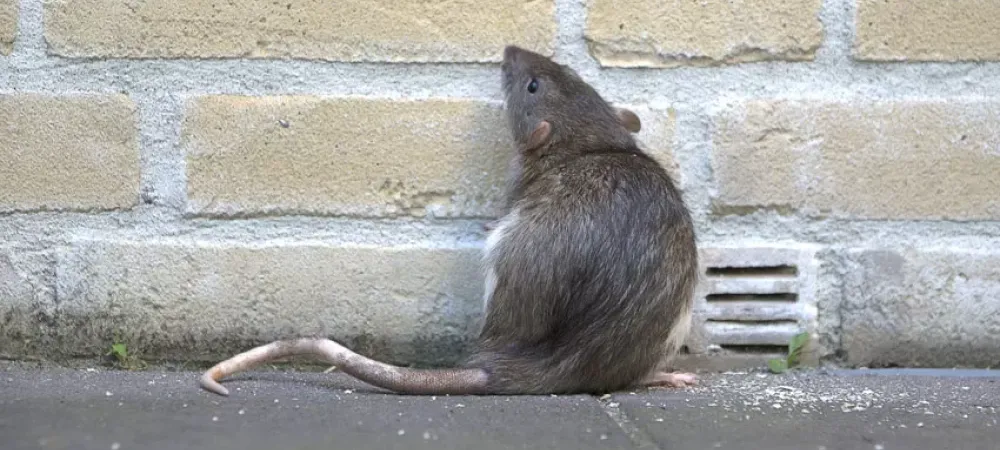A Rodents List to Help You Stay One Step Ahead of the Game

If you're reading this, chances are you're looking for a way to stay one step ahead of these furry little critters - rodents. Well, you've come to the right place!
In this blog, we'll be exploring the ins and outs of rodents, from rodent definition to the different types of rodents that can make your life a little more interesting to the best ways to keep them from making themselves at home in your house.
Now, we all know that rodents aren't exactly the most beloved creatures on the planet. They're often associated with dirt, disease, and general unpleasantness. But, hold your horses! Before you start snickering and making fun of these tiny creatures, let us tell you this - they are fascinating!
With their sharp teeth, beady eyes, and twitching whiskers, rodents are like little bundles of energy just waiting to take over your life. That's why it's important to stay one step ahead of them and know your enemy.
So, grab a pen and paper, and get ready to learn about the different types of rodents on our rodents list! From the little-known and often-overlooked to the well-known pests, we'll cover it all and give you the tools you need to stay one step ahead of the game.
Let's go!
What Is a Rodent?
A rodent is a small mammal that has a long tail, rodent-like teeth, and often lives in burrows. The term "rodent" comes from the Latin word rodere, which means "to gnaw." There are more than 2,000 different species of rodents, making them the largest group of mammals.
Rodents are characterized by their long tails, sharp incisors, and agile movements. Their front teeth grow continuously, so they must gnaw on hard objects to keep them from getting too long. This gnawing behavior is why rodents are often considered pests; they can damage buildings and belongings by chewing on them.
Despite their reputation as pests, some rodents are actually quite valuable to humans. For example, beavers help to create wetlands that provide habitat for other animals. And many people keep pet rodents, such as hamsters and gerbils, as companion animals.
Understanding the Enemy
There are many different types of rodents, each with their own unique characteristics. Some common misconceptions about rodents include that they are dirty and carry diseases, when in fact, they are very clean animals. Here is a closer look at some of the different types of rodents and what makes them so interesting:
Mice
Mice are one of the most common types of rodents. They are small and agile, making them difficult to catch. Mice are also known for their ability to reproduce quickly, which can be a problem for homeowners who find them in their homes.
Rats
Rats are larger than mice and can be a more serious problem for homeowners. Rats are known to carry diseases, so it is important to call a professional if you suspect you have a rat infestation.
Squirrels
Squirrels are another type of rodent that is commonly found in yards and gardens. Squirrels are known for their bushy tails and their love of nuts. Squirrels can be a nuisance if they start digging in your garden or eating your flowers.
Chipmunks
Chipmunks are small, but they can be very pesky. Chipmunks love to eat insects and will often dig holes in your yard looking for food. They can also be a nuisance if they build their nests in your home.
Gerbils
Gerbils are small, shy creatures that are not often seen by humans. Gerbils are actually quite interesting animals and make good pets for children. Gerbils need to gnaw on things to keep their teeth from getting too long, so it is important to provide them with plenty of chew toys.
Hamsters
Hamsters are one of the most popular pets for children. They are small, cute, and relatively low-maintenance. Hamsters do need to have a wheel or some other type of exercise equipment to keep them active, as they tend to sleep a lot during the day.
When most people think of rodents, they think of small, dirty creatures that are nothing more than pests. But there is so much more to these creatures than meets the eye! In fact, rodents are some of the most fascinating and unique creatures on the planet. Here are just a few things you might not know about them:
There are over 2,000 different rodent species, making them one of the largest groups of mammals on Earth.
Most rodents are actually quite clean and fastidious, spending a large portion of their time grooming themselves.
Rodents have incredibly sharp senses, able to detect even the slightest changes in their environment.
Many species of rodents are social creatures, living in large communities with complex social structures.
And what about rodents lifespan?
Some rodents can live for up to 10 years in captivity, though most only live for 2-3 years in the wild.
The "Who's Who" of Rodents
There are many different types of big and small rodents that people encounter on a daily basis. While some of these rodents are harmless, others can be quite dangerous. Here is a list of rodents that people encounter, along with a description of their habits and features.
1. The house mouse is one of the most common rodents that people encounter. These small mice are typically brown or grey in color, and they have long tails. House mice are known for their ability to squeeze through very small openings, which is how they often gain access to homes. These mice are not typically dangerous to humans, but they can carry diseases and they can be a nuisance.
2. The Norway rat is another common type of rodent. These rats are larger than house mice, and they have shorter tails. Norway rats are typically brown or black in color, and they have shaggy fur. These rats are known for being very aggressive, and they can pose a serious threat to both humans and animals. Norway rats are also known for being excellent swimmers, and they often live near bodies of water.
3. The black rat is another type of rat that is commonly found in homes and businesses. Black rats are smaller than Norway rats, and they have longer tails. Black rats are typically black or dark brown in color, and they have smooth fur. These rats are not as aggressive as Norway rats, but they can still pose a threat to both humans and animals. Black rats are also good climbers, and they often live in trees or other high places.
4. The deer mouse is a type of mouse that is found in wooded areas. Deer mice are small mice with brown or reddish-brown fur, and white bellies. These mice are not typically dangerous to humans, but they can carry diseases such as hantavirus. Deer mice are also known for being good climbers, and they often build their nests in trees or other high places.
5. The field mouse is another type of mouse that is found in fields and other open areas. Field mice are small mice with brown or grey fur, and white bellies. These mice are not typically dangerous to humans, but they can carry diseases such as hantavirus. Field mice are also known for being good swimmers, and they often build their nests near bodies of water.
6. The Wood Mouse: This mouse is brown or grey in color, and has a long tail like the field mouse. However, they are smaller than the field mouse, and have bigger ears relative to their body size. They are found in woods and other rural areas, and are known for their love of acorns and nuts.
Rodent-Proofing Your Home
Rodents like mice and rats can be cute when they’re scurrying about in parks or on TV – but in real life, they’re serious pests! Rats are known to cause structural damage to homes while mice can contaminate food sources. So, keeping your home rodent-proof is essential for maintaining a safe and healthy environment.
Most rodents enter homes through small holes and cracks around the exterior walls, windows and doors. They also love to nest in attics, basements, crawlspaces and sheds – so take a look around those areas for any signs of entry. You may even find that some rodents have taken up residence in kitchen appliances like stoves or refrigerators! To help keep them out, use caulk to seal up any holes or cracks that you find.
Another way to keep rodents from getting into your home is by keeping your living space clutter-free – particularly cardboard boxes and other materials that might make good nesting spots for small rodents. It’s also important to regularly inspect your property for signs of rodent activity, such as droppings or gnaw marks on wood surfaces. If you spot anything suspicious, take the necessary steps to eliminate the problem right away before it gets worse!
Finally, remember that prevention is the best cure when it comes to keeping rodents out of your home. Be sure to store food properly in airtight containers, regularly clean up any spilled food particles in the kitchen, and don't leave pet food bowls lying around where rodents can access them. Taking these simple precautions will go a long way towards keeping those pesky critters away!
If all else fails and you suspect you may have a rodent infestation on your hands – don't panic! There are plenty of rodent control services available that can help get rid of any unwelcome guests. Most companies offer solutions that focus on trapping rather than extermination – so you won't have to worry about harming innocent animals in the process. And if all else fails...you could always enlist a team of cats to get rid of those pesky critters for you!
Dealing With Rodent Infestations
When it comes to these furry intruders, first you have to recognize the signs of an infestation in order to know what to do.
The most common signs of a rodent infestation are droppings, gnawed furniture or food containers, and maybe even evidence that one has been caught in a trap. Being made aware of strange noises coming from walls and ceilings could also be a sign that there are some unwelcome guests. If you suspect that rodents have invaded your space, there are some steps you must take in order to rid them from your home safely and effectively.
First, stop feeding them! This means sealing any food containers tightly and keeping pet food off the ground. Next, consider identifying the species so that you can make sure you're using the correct traps for it – knowing whether mice or rats have invaded your home will help you decide which type of trap is necessary for removal (since rats tend to require more powerful ones). It's also important to note the rodent lifespan - each rodent species has its own lifespan. Mice generally live up to two years while rats can last up to three years – so it’s important that you are prepared for this knowledge beforehand.
Once your traps are set up properly, it’s time to get creative! Think about baiting them with peanut butter or cheese – something irresistible. It might sound silly but trust us; if there’s one thing rodents love more than crumbs on the floor…it’s peanut butter!
Finally, once you’ve successfully removed them from your home don't forget about cleaning up after them. Disinfecting any places where they may have left behind bacteria will ensure that other germs aren't lurking around!
So, as long as you're aware of all these steps when dealing with rodent infestations – trapping them and disinfecting affected areas - then hopefully their stay at your home won't last too long…or maybe they'll fall in love with their new digs like most people do and never leave!
Q: Are rodents mammals?
A: Yes, rodents are mammals.
Q: Are squirrels rodents?
A: Yes, squirrels are rodents.
Q: What do rodents eat?
A: Rodents eat a variety of foods including seeds, nuts, fruits, insects, and sometimes other small animals. Some common examples of rodents include mice, rats, squirrels, and hamsters, and their diets can vary depending on the species and their habitat.
Q: What sort of damage do rodents cause?
A: Rodents cause both structural and economic damage. Structurally, they gnaw on electrical wiring, insulation, and wooden beams, causing potential fires and structural weakness. Economically, they eat crops, stored food, and cause contamination with their droppings and urine. They also spread diseases such as salmonella, Hantavirus, and bubonic plague.

